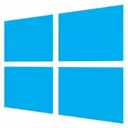Windows Operating Systems Lifecyles
ArticlesMicrosoft desktop Operating Systems have a lifecycle in which receive updates and security patches.
When an Operating System (OS) reaches the end of its cycle of life, doesn't mean that we will not be able to use this Operating System. For example, Windows XP reached the end of its lifecycle on April 8, 2014, and this Operating System is still installed and working in a multitude of world wide computers. According our users data, 20% of our visitors still using Windows XP on their personal computers.

Then, What means that Windows XP has reached the end of its life cycle?
The lifecycle of the Operating Systems Windows are determined by the period of time during which the OS will receive Microsoft support.
We must distinguish two kinds of supports :
Standard Support. This type of support includes the following:
Paid Support : if we have any problem we will be able to hire the services of Microsoft so they solve the problem.
Security Updates : Microsoft release public updates to protect critical failures related to safety.
Hotfix not related with Security : Microsoft release public patches that fix critical flaws not related to security.
No-charge incident : if you have a license with this kind of support, you'll be able to use it.
Warranty Claims .
Design changes and new feature requests : you can request changes and improvements for the OS
Find information about the operating system on the Microsoft Knowledge Base.
See related operating system technical information, using Microsoft Help and Support site.
Extended support. This support is more limited than previous one, and only includes following points:
Paid Support .
Security Updates .
Patches/Hotfixes not related with Security . This option will only be available if acquires an additional license. This license can be purchased up to 90 days after the expiry of the Standard Support.
Find information about the operating system on the Microsoft Knowledge Base..
See related operating system technical information, using Microsoft Help and Support site..
So during Extended Support period, Microsoft will not accept warranty claims, requests for changes or new features.
Each type of support is available during a fixes period of time. For example, Windows XP had more than 7 years of Standard Support, and almost 5 years of Extended Support. Which sums a total of 13 years of Support.
Windows XP was launched to the market on December 31, 2001, and the Standard Support ended on April 14, 2009, while the Extended support ended on April 8, 2014.
The length of time that will be available each type of support is determined by Microsoft. For Windows 7, Windows Vista and Windows 8, the support period is around 10 years, that is 3 years less that the support given to Windows XP. Although with Windows XP Microsoft had to extend the support due to the a large number of users who have not migrated their machines to more modern Operating Systems.
The listed above Operating Systems end of support dates are the following:
End of Standard Support
End of Extended Support
Windows Vista
April 10, 2012
April 11, 2017
Windows 7
January 13, 2015
January 14, 2020
Windows 8
January 9, 2018
January 10, 2023
When Microsoft end the support to an O.S., this will no longer receive any type of update or security patch, so it is important to update our PC to a more modern version of Windows that receive updates and improvements.
On January 13, 2015 Windows 7 will end the Standard Support, so since that date we can not to make requests for enhancements, warranty claims or make use of no-charge incident support (in the case Windows 7 license include that kind of support). If we want to continue to receive critical patches (not related to security), we will need to purchase an additional license, which may be acquired until April 13, 2015.
Sources:
http://windows.microsoft.com/en-US/windows/lifecycle
http://support.microsoft.com/gp/lifepolicy
